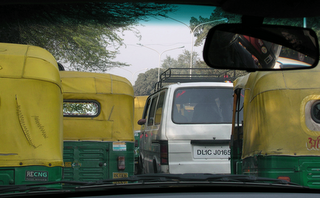Polo, New Delhi Style
 I once had a friend … well, he was my boss … who played polo in India even though he couldn’t ride a lick when he arrived in New Delhi for his three-year tour of duty at the American Embassy. Then, someone took him to a polo match. “It looked like fun,” he said. “So, I joined the local polo club.”
I once had a friend … well, he was my boss … who played polo in India even though he couldn’t ride a lick when he arrived in New Delhi for his three-year tour of duty at the American Embassy. Then, someone took him to a polo match. “It looked like fun,” he said. “So, I joined the local polo club.”
Maybe it was cheaper then. Now, it’s one thousand dollars a year plus you pay for your lessons and your rides. But they do teach you polo, and you do get to play—but not like the top national riders.
Most of them come from the military, which means that polo is more or less run by the Indian Army. Every Saturday and Sunday the lorries—that look like beet trucks—haul into the New Delhi polo grounds, each holding eight or nine cross-tied “ponies.” Troop carriers follow, filled with uniformed horse handlers. There are men to hold the horses, men to groom them, men to clean up after them. There are horse-walkers, tack wallahs, and water carriers, not to mention non-coms to direct the whole affair.
…even the seats in the viewing stand sport white slip covers …
Polo, as a sport, originated in India, and the Indians take it seriously. From the horses, which are as good as any I’ve seen anywhere, to the organization, attention to detail is everywhere present. Even the seats in the viewing stands sport white slip covers, brilliantly clean. And, every week a horde of low caste Indians labor on the thirteen-acre playing field, repairing the damage done by hundreds of galloping hooves.
On the subject of caste, I wonder if polo is a social leveler. Theoretically, I would assume, a low caste Indian with a talent for making goals, can whack mallets with a prince and receive a congratulatory kiss on the cheek from princess. Do they? I should find out.
We went to the all-India finals, the last matches of 2006, hoping that rumors of intermission entertainment of performing elephants and other Indian delights was true. It wasn’t. We were treated to music from a regimental band and a marching cadets who goose-stepped right smartly across the turf.
... they missed my own fashion statement of jeans from Linton’s Big R …
Other entertainment included a “best dressed” award that went to a twenty-something dressed in skin-tight designer jeans, a leather jacket and a matching leather tam. What I couldn’t figure out was how they missed my own fashion statement of jeans from Linton’s Big R and a Ralph Lauren polo shirt over a pair of sandals.
Another puzzlement was how we, American horse breeders, missed the Indian market. Most of the horses, I learned, come from Argentina and are Argentinean Thoroughbreds or TB crosses. And the prices the Indians pay! A hundred thousand for a nice 15 hand gelding with potential.
Think of the demand. Most of the players have a string with a minimum of six horses. There are four players with alternates for each team. And there are dozens of teams in Delhi, nevermind those based in other parts of the country.
But for any of you thinking to break into this market, forget it. The Argentines have it locked up through the simple expedient of sending their players to India along with their horses. The players come. They win on their own horses. And they sell and sell and sell. Really, too smart.






